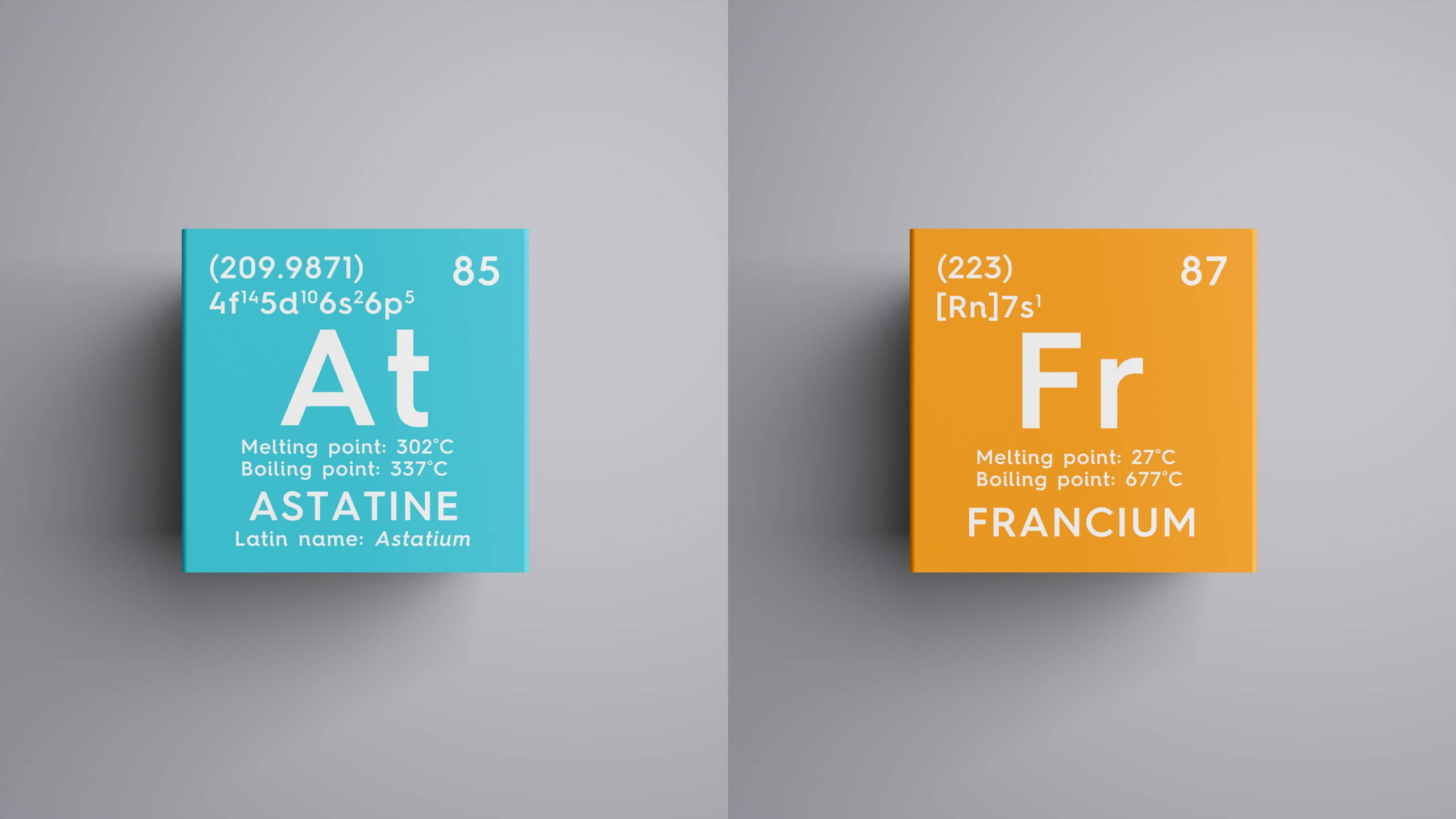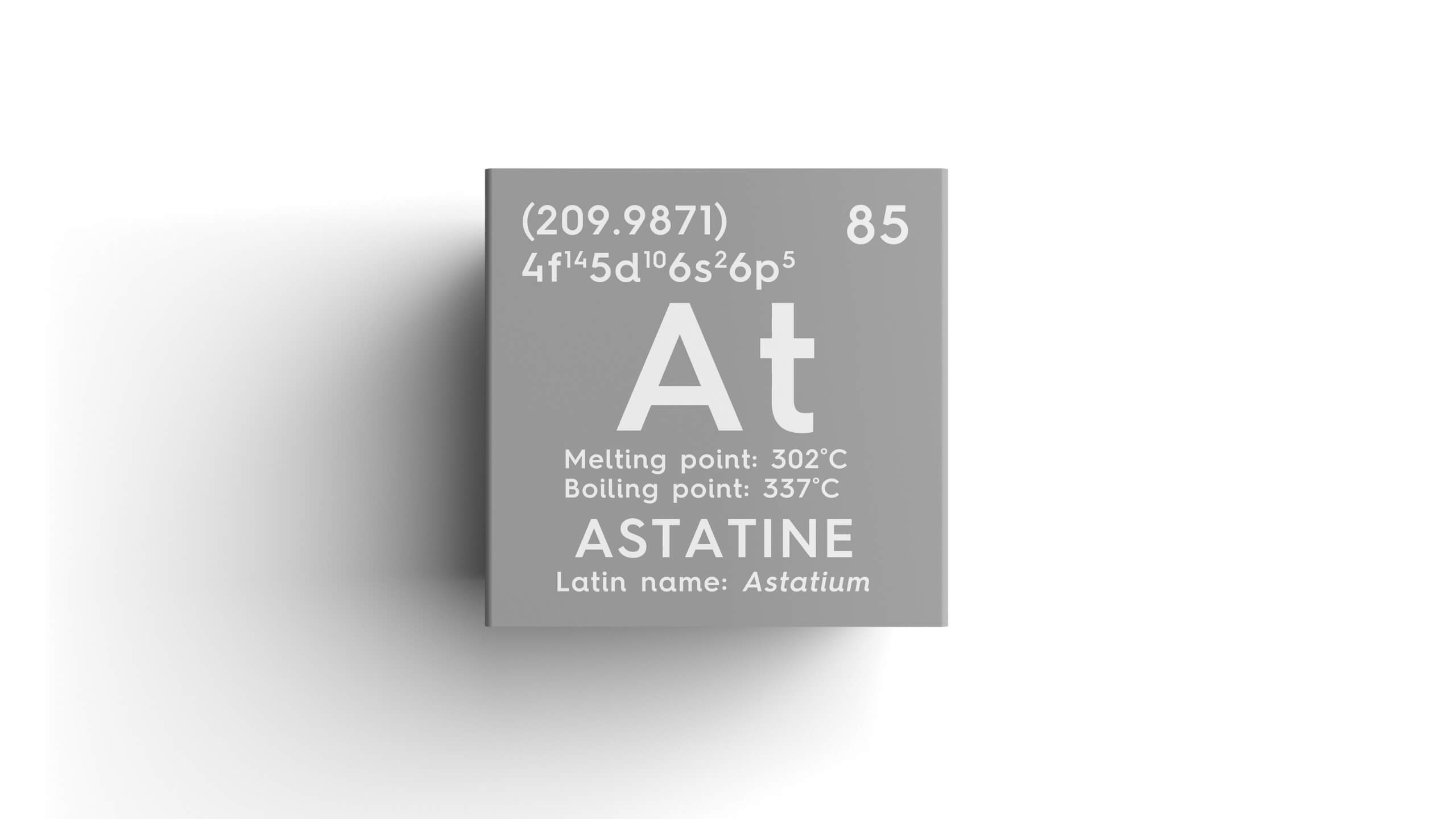Astatine is the rarest element on earth and on the periodic table. It is from the halogen group of elements, which include fluorine, chlorine, and iodine. Let’s take a look at why astatine is so rare and what its uses are.
What Is The Rarest Element On Earth
Element astatine is the rarest element on Earth, and obviously on the periodic table. It belongs to the halogen group of elements and has an atomic number of 85. The estimated amount of astatine naturally found on earth at any given time is only up to 25 games.

Astatine is a radioactive element and is naturally found in only trace amounts in thorium and uranium ore and other natural sources. It is formed as the decay product of these radioactive elements. Artificially it can be produced by nuclear reactions involving bismuth isotopes and energetic alpha particles.
Astatine is a highly unstable element; the half-life of its most stable isotope (astatine- 210) is only 8.1 hours. The number of its known isotopes is 39 (with atomic masses from 191 to 229), most of which have half-lives of only one second or less. This instability makes it difficult to study or to use for other practical purposes.
Also Read: What are the parts of an Atom?
What Is The Rarest Element On The Periodic Table?
Astatine is also the rarest element on the periodic table. It is a halogen element from the fluorine and chlorine group. It is a radioactive element with a very short half-life, which does not allow it to exist for a long time and quickly decays into other elements.

Why is astatine so rare?
Astatine is so rare on the earth because of three main factors:
🔬 Subscribe to SciMail
Get the latest science discoveries straight to your inbox!
- Astatine is naturally produced in trace amounts as the decay product of radioactive elements, such as thorium and uranium. This limited production in nature makes it so rare.
- Astatine has a very short half-life and decays quickly into other elements. Its most stable isotope is astatine-210, which has a half-life of only 8.1 hours. Most of its other isotopes have half-lives of one second or less.
- Additionally, it is difficult for astatine to react with other elements and form compounds.
All these factors collectively make astatine extremely rare to naturally exist on earth. So when needed, it is produced artificially in very small amounts through a costly and difficult process of nuclear fission reactions.
Is astatine toxic?
Yes, astatine is a highly toxic element because of its radioactive property. In animal studies, it has been found carcinogenic (cancer-causing agent). If inhaled or ingested, it can cause serious health effects. Because of its potential to cause long-lasting damage, scientists working with astatine are strictly advised to take high safety precautions. People are advised to avoid it as much as possible.

In a study, astatine was shown to bioaccumulate in the environment, which means exposure to even its small amount can have long-lasting consequences. In animals, astatine was found to accumulate in the thyroid gland and liver just like iodine does. However, unlike iodine, it does not emit high-energy electrons.
What is astatine used for?
Astatine is a radioactive element that has been practically used in many fields:
- It is primarily used in the medical field to treat cancers. Its short half-life makes it an ideal component for targeted radiotherapy treatments. It is used for the treatment of Hodgkin’s lymphoma and other forms of leukemia (cancer of the blood cells). Scientists also use astatine in research studies to well-understand how radiations affect living cells.
- Scientists use astatine for the study of nuclear reactions and neutron capture cross-sections for other elements, as well as to provide a deep look into the properties of neutrons themselves.
- For industrial purposes, astatine is used in nuclear power plants to control the process of fission reactions and to regulate temperatures within reactors.
- Astatine is also used in military applications. Its radioactivity makes it an ideal candidate for certain types of radar systems that are designed for the detection of incoming aircraft and missiles from long distances away.

What are the 2 rarest elements?
Astatine and francium are the two rarest elements on earth and in the universe.
- Astatine is a radioactive element naturally found in trace amounts in the thorium and uranium ore as the decay product of these elements. It has a very short half-life and quickly decays in seconds into other elements.
- Francium is an alkali metal that naturally exists on earth, but it also has a very short half-life of only 22 minutes and quickly decays into other elements. Due to its short half-life, it is incredibly difficult to study.

What are the top 10 rarest elements in the universe?
The top 10 rarest elements in the universe are:
- Astatine
- Francium
- Promethium
- Technetium
- Protactinium
- Neptunium
- Berkelium
- Americium
- uranium -236
- Plutonium-244


Leave a Reply